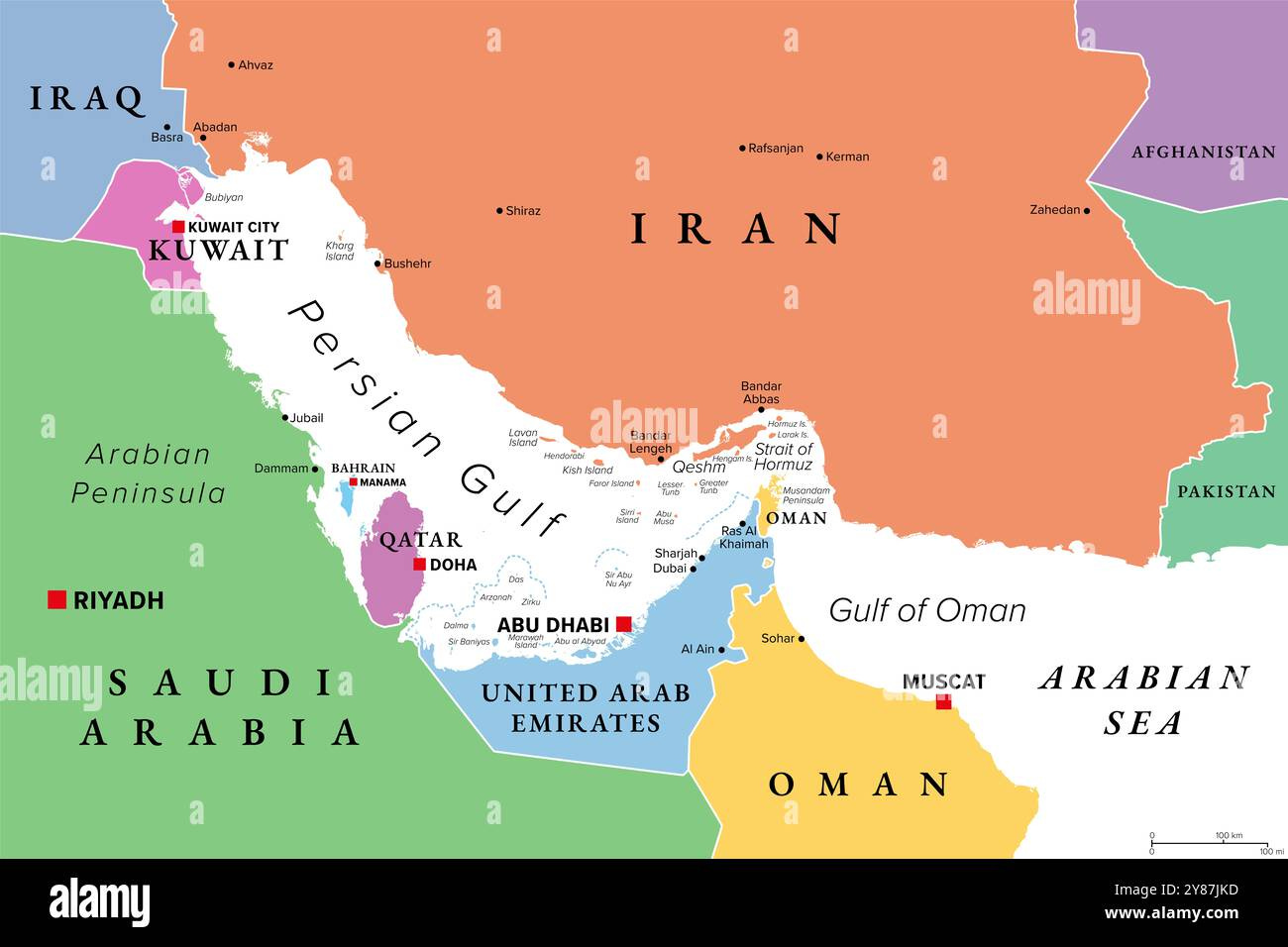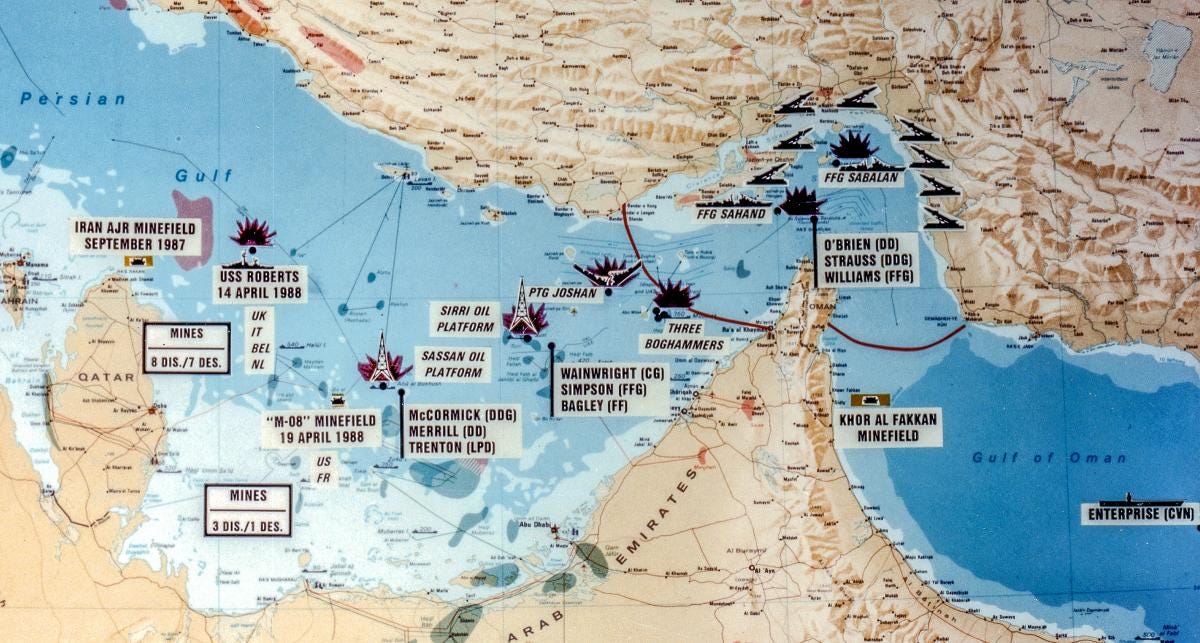“Control oil and you control nations; control food and you control the people.”
— Henry Kissinger
At first glance, the Strait of Hormuz is just a thin crack in the earth’s surface—a narrow waterway separating the Persian Gulf from the open waters of the Arabian Sea. But within those 21 nautical miles lies the highest concentration of geopolitical volatility on the planet. Every day, ships carrying oil, liquefied natural gas (LNG), and global economic stability squeeze through a space barely wider than a large city’s subway line.
It’s not just a maritime chokepoint—it’s a pressure valve for the world economy.
What makes this place so dangerous is not simply its geography—it’s the ancient and modern rivalries stacked on top of it. The strait doesn’t just divide land and sea. It separates Sunni from Shia, monarchies from republics, and East from West. Its waters reflect centuries of imperial ambition and religious conflict—layered now with pipelines, warships, and drone surveillance.
But to understand why this sliver of ocean can make or break markets, you have to start with how it came to be.
Before Hormuz became a frontline in the oil wars of the 20th and 21st centuries, it was already one of the most contested sea lanes in world history.
In the 1500s, the Portuguese Empire seized control of Hormuz Island, turning it into a fortified trading hub and checkpoint for spice and silk flowing between Asia and Europe.
By the 17th century, the Safavid Persians, with help from the British East India Company, forced the Portuguese out—marking the beginning of a long tug-of-war between Persian and European naval powers.
The British, recognizing the strategic value of the Persian Gulf, gradually expanded their influence throughout the 1800s—signing “Trucial Agreements” with various Gulf tribes (in today’s UAE, Bahrain, and Qatar) and establishing protectorates to guard their trade routes to India.
Fast forward to the 20th century, and the real reason for fighting over Hormuz emerged: oil.
The discovery of oil in Persia (1908), Bahrain (1932), and Saudi Arabia (1938) transformed the Gulf from a sleepy imperial frontier into the beating heart of global energy. By the time World War II ended, the old European empires were fading—but their oil concessions remained. The United States, hungry for post-war influence and energy security, quickly filled the vacuum.
America’s relationship with the Gulf began as a business transaction—but it didn’t stay that way for long.
As the Cold War unfolded, Washington saw control of Gulf oil as a national security imperative. When the British announced their withdrawal “East of Suez” in 1971, the U.S. began deploying more naval assets to the region, quietly assuming the role of global enforcer. The partnership became more urgent after the 1973 oil embargo, which taught the West that access to energy was anything but guaranteed.
Then came 1979—the year everything changed.
Iran's Islamic Revolution toppled the pro-Western Shah and installed a theocratic regime that openly called for the expulsion of American forces and the collapse of U.S.-backed Gulf monarchies.
A few months later, the Soviet Union invaded Afghanistan, raising fears of a Soviet land route to the Persian Gulf.
President Carter responded with the Carter Doctrine, pledging to use military force if necessary to defend U.S. interests in the Gulf. The message was clear: the U.S. would not tolerate disruption in the Strait of Hormuz.
That pledge was tested almost immediately during the Iran–Iraq War (1980–1988). As both sides targeted each other’s oil exports, the war spilled into the sea in what became known as the Tanker War. Iraq bombed Iran’s Kharg Island terminals, while Iran mined shipping lanes and harassed Kuwaiti tankers.
The U.S. launched Operation Earnest Will in 1987, escorting re-flagged Kuwaiti tankers under American protection. When an Iranian mine struck the USS Samuel B. Roberts, the U.S. retaliated with Operation Praying Mantis, sinking or crippling half the Iranian navy in a single day.
The message? The U.S. wasn’t just defending its Gulf allies—it was protecting the world’s oil lifeline.
No stretch of ocean has a greater influence on oil prices, LNG contracts, or global shipping insurance than the Strait of Hormuz. At just over 21 nautical miles wide, it functions as the world’s busiest and most vulnerable energy corridor—a narrow channel through which the modern economy flows.
Keep reading with a 7-day free trial
Subscribe to The Monetary Skeptic to keep reading this post and get 7 days of free access to the full post archives.








